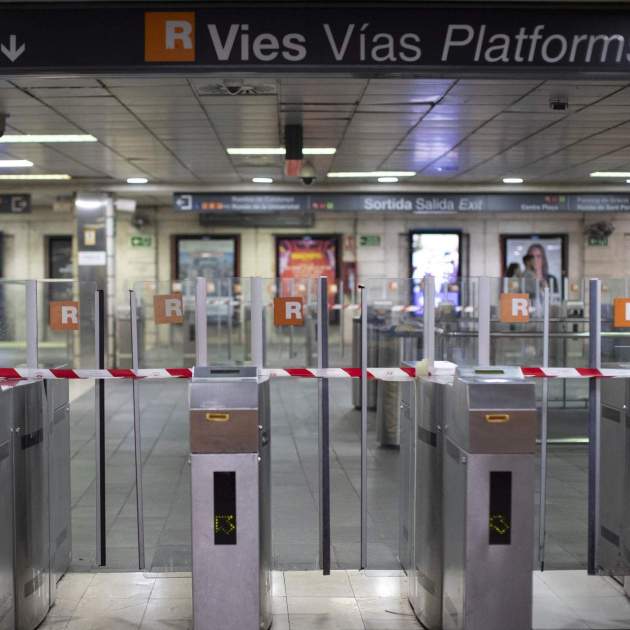A judge in the town of Cerdanyola del Vallès, near Barcelona, has requested a report from Catalonia's Mossos d'Esquadra police to establish the exact point where the copper cable theft occurred on the Rodalies suburban rail network last Sunday, in order to determine which judicial body has responsibility for the case, that is to say, who must investigate it. This has been explained by the Catalan High Court (TSJC) in a statement this Wednesday, after the duty judge had, on Tuesday, received the complaint submitted by rail infrastructure firm Adif over the incident which set off a domino effect of major network disruption that is still ongoing and may take up to two months to be resolved. At present, three days after the incident, four lines of the notoriously problematic Rodalies network - R3, R4, R7 and R12 - are still affected by the damage caused, and multiple alternative transport measures have been introduced, with schedules being modified.
It was the Spanish transport minister, Óscar Puente, who informed that Adif had now reported the events to the police, after the director of the Mossos, Pere Ferrer, noted that 48 hours after the events there had been no complaint laid. Puente had already made himself into a protagonist of the controversy on Monday, when, in response to the outrage that the incident had taken place in Catalonia in the middle of Sunday's election day, he suggested that the responsibility for the problem lay with the Catalan police force, since they are the ones with competences in security, and in this regard he noted the possibility of election day "sabotage". This Tuesday he reiterated that Adif and rolling stock operator Renfe "have no responsibility for the acts of vandalism that occur with excessive frequency in Catalonia", and again he insisted on pointing the finger at the Mossos.
Ferrer, however, defended the Catalan police and shot back at Adif. "If we have to designate responsibilities, we have to start with Adif, in the first place, because it is an infrastructure that they own and have to protect," he said, also criticizing the lack of investment in the Spanish-government owned network. Nevertheless, Ferrer said he was open to talking with Renfe and Adif to carry out a security audit of the infrastructure to improve it, install cameras in critical places, toughen perimeter fencing and also install alarms that allow greater effectivity in detecting trespassers. On the other hand, after carrying out the first inspections on the network, the Mossos ruled out sabotage in Sunday's action, and concluded that it was one more theft of the many that take place every week on the Adif and Rodalies network in Catalonia.
What happened on Sunday?
In the early hours of Sunday morning, election day in Catalonia, the theft of copper cable in the rail installations at Montcada Bifurcació, a few kilometres north of Barcelona city, caused a power surge which then precipitated a domino effect on rail infrastructure installations belong to Adif, which explained on the X social media that the theft of copper cable from the electrification system in Montcada-Bifurcació "had caused several fires in signaling system wiring and control centres in the Barcelona area, affecting all the lines on the Rodalies network".
A domino effect
From about 4am, the copper theft triggered a ripple effect across rail infrastructure in Barcelona. The fires damaged wiring and this affected "signaling, communications and security installations, points systems and other equipment", which paralyzed practically the entire network of Rodalies suburban trains in Barcelona. Adif's technicians set to work to try to solve the incident, but the severity of the damage made it impossible to impose a solution on election day, and users were forced to attempt to make other transport plans. The Central Electoral Commission (JEC) refused a request to extend voting hours for the Catalan election because the problem had been known since the morning and thus, it argued, users had time to find alternative means of getting to voting centres.
